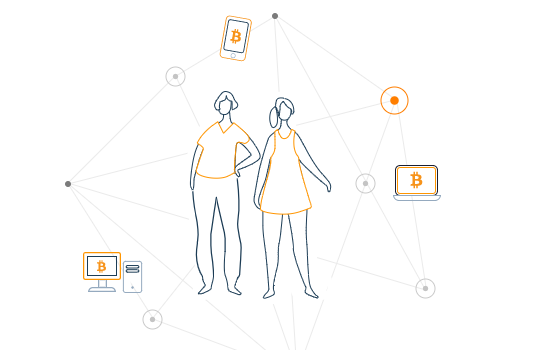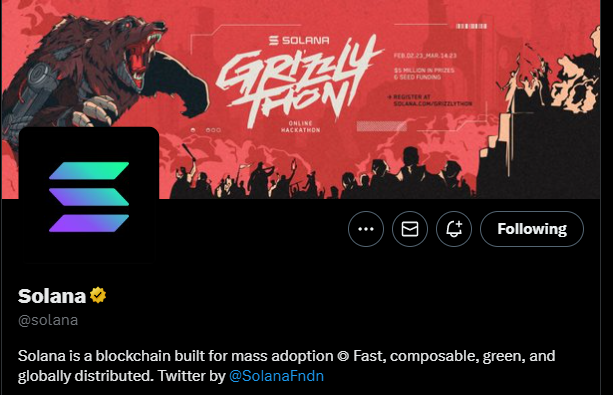
There are a lot of reasons why so many people seek to learn the crucial differences between Bitcoin and Solana. These networks are among the top options for traders with both being listed on major CEXs and having a strong following. So how does the world’s first cryptocurrency stack up against a third-gen powerhouse? Here’s some valuable insight into Bitcoin vs. Solana.
What is Bitcoin?
Bitcoin was the first successful attempt at making a reliable and secure decentralized currency. The network changed the world forever when Satoshi Nakamoto published the now-famous Whitepaper in 2008. The paper described how a network of nodes could act as the validation system rather than leveraging a central group like a bank.
Bitcoin filled a need in the market for a permissionless electronic peer-to-peer cash system. Now, Bitcoin has seen its use-case shift from day-to-day spending to include store-of-value purposes. The network has seen considerable growth with an all-time high of over $68,000.
Today, Bitcoin has started to regain some of its day-to-day currency capabilities thanks to new technologies such as the lightning network. This off-chain protocol enables Bitcoiners to cheaply send up to 1,000,000 tps – which is significantly faster than the mainnet. This development has helped Bitcoin stay relevant in a market with increasingly capable competitors.

Source: Bitcoin.org – Bitcoin vs. Solana
What is Solana?
Solana is a third-generation programmable blockchain. The network is the brainchild of Anatoly Yakovenko who founded Solana in 2017. At that time, the focus on the market was to introduce a programmable blockchain that could outperform Ethereum and provide more scalability.
Solana entered the market to fulfill these goals. The platform was a hit with developers due to its open infrastructure. Additionally, traders enjoyed its low fees and high performance. Today, Solana is a vibrant blockchain community that features a combination of DEXs, DeFi, and Dapps.
What Problems Was Bitcoin Built to Alleviate?
Given that no one knows the Bitcoin founder directly, one can only speculate on Bitcoin’s true purpose. In the coin’s whitepaper, Nakamoto states that the protocol would operate as a peer-to-peer electronic cash system. Aside from its technical purpose, there are some higher levels of purpose that Bitcoin fulfills.
Nakamoto hints at some of the coin’s goals such as providing a more transparent and fair option to the market. In the Bitcoin genesis block, which is the first block of its blockchain, Nakamoto embeds a reference to the Bank of England receiving a massive bailout. This reference can be seen as a clue as to one of the reasons why Nakamoto created this game-changing invention.
Bitcoin opens the world for a global economy using digital currency. The expansion of the internet has made this concept even more possible than ever before. Bitcoin remains a pioneer in terms of freedom and openness in the market. Its community still holds the torch regarding fulfilling Nakamoto’s dream of a fair economy for all.
What Problems Was Solana Built to Alleviate?
When Solana entered the market scalability concerns were wreaking havoc on networks. Ethereum and Bitcoin were suffering from crushing congestion that made both networks nearly unusable. There were instances when it cost more to send these tokens than the actual amount you were trying to send.
This congestion left Dapp developers and users in search of more scalable alternatives. This is the time when Solana entered the market. Cryptocurrencies were in a breakout year with the introduction of the ERC-20 token standard and the ICO (Initial Coin Offering) craze. Solana entered the market to fill a need for a high-performance programmable network.
The network integrated a new consensus mechanism that improved its performance considerably compared to Bitcoin. Bitcoin can handle around 7 tps on its mainnet. In comparison, Solana has been bench tested to 29,171 tps. Part of this performance comes from the improved block times. Bitcoin has a 10min block approval time. Solana approves blocks every 2.34 seconds. Additionally, the developers were sure to leave room for the network to scale vertically in the future to meet growing demands.
How Does Bitcoin Work?
Bitcoin uses a Proof-of-Work (PoW) consensus algorithm to operate. This system eliminates central groups and replaces them with network nodes called miners. These participants are responsible for approving blocks of transactions every ten minutes. Once approved, these blocks get added to the chain of transactions to form the blockchain.
While all miners approve transactions, only one receives the rewards. The reward is given to the miner that is the first to figure out a complex mathematical equation called SHA-256. This equation is so difficult that your computer concludes it’s easier to make random guesses than do the actual computations.
When you hear about Bitcoin miners, these are devices that are built to complete this equation faster. Today’s Bitcoin network miners use advanced ASIC (Application Specific Integrated Chips) that are thousands of times better at solving the SHA-256 equation versus your PC.
BTC
BTC is a cryptocurrency that operates on the Bitcoin network. As the first cryptocurrency, BTCs first technical purpose was to act as digital money. Consequently, it’s limited in its technical capabilities versus today’s advanced networks. Notably, there are only 21M Bitcoin slated for issuance.
How Does Solana Work?
Solana is a third-generation blockchain that employs a Proof-of-Stake (PoS) consensus system to remain valid. This style of blockchain does away with miners and replaces them with stakers. Stakers agree to lock their tokens in a smart contract to participate in the approval process.

Source: Twitter – Solana
The advantage of this approach is that it’s more environmentally sustainable, doesn’t require expensive equipment, and is designed to be more democratic. Anyone can use their tokens to secure rewards. The downside of staking networks is that they are not as proven as PoW networks like Bitcoin, which have over a decade of secure operations, and are known to suffer from outages.
Solana integrates an additional timestamp into its blocks of transactions which improves referencing. The cryptographic clock means that nodes don’t have to approve the entire state of the blockchain every time. They can leverage these snapshots to improve performance, which acts as another layer of validation.
SOL
SOL is the main utility token for the Solana network. This advanced token serves multiple roles in the ecosystem. Fr For one, it’s used to pay transactions and smart contract execution fees. It can also be used to send value globally. Token holders can stake SOL to gain passive rewards.
How to Buy Bitcoin (BTC) and Solana (SOL)
Currently, Bitcoin (BTC) and Solana (SOL) are a each available for purchase on the following exchanges.
Uphold – This is one of the top exchanges for United States & UK residents that offers a wide range of cryptocurrencies. Germany & Netherlands are prohibited.
Uphold Disclaimer: Assets available on Uphold are subject to region. All investments and trading are risky and may result in the loss of capital. Cryptoassets are largely unregulated and are therefore not subject to protection.
Kraken – Founded in 2011, Kraken is one of the most trusted names in the industry with over 9,000,000 users, and over $207 billion in quarterly trading volume.
The Kraken exchange offers trading access to over 190 countries including Australia, Canada, Europe, and is our most recommend exchange for USA residents. (Excluding New York & Washington state)
Binance – Best for Australia, Canada, Singapore, UK and most of the world. USA residents are prohibited from purchasing most tokens. Use Discount Code: EE59L0QP for 10% cashback off all trading fees.
Bitcoin vs. Solana
Now that you have more insight into the Bitcoin vs. Solana discussion, you’re more informed and prepared to make your decision. Both networks have strong followings and a bright future. Bitcoin has proven to be the industry leader with a secure network, but Solana has its mainnet beat in terms of capabilities and performance. For these reasons, both networks are a smart addition to your portfolio. You can learn more about Bitcoin and Solana via the links.






